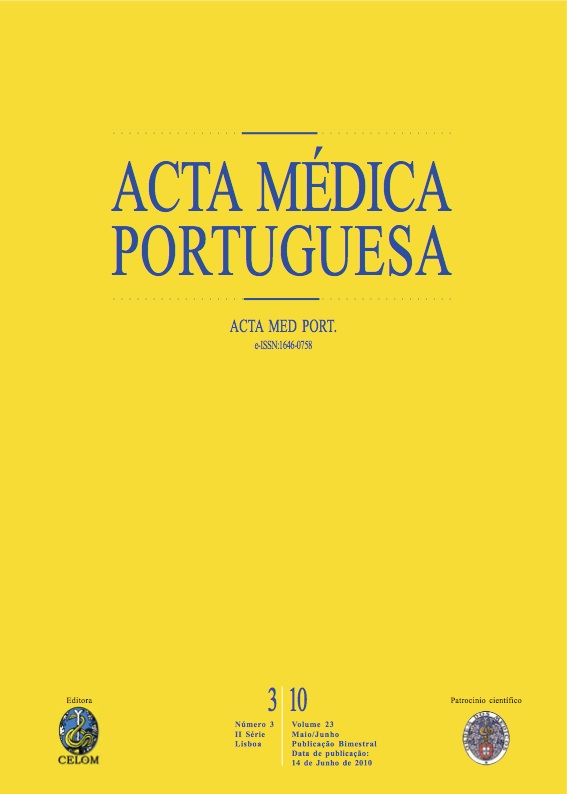S. Pyogenes invasive disease in a paediatric hospital: 1996-2009.
DOI:
https://doi.org/10.20344/amp.642Abstract
S. pyogenes is among the most common bacteria in Pediatrics, and is associated with a wide variety of infections and large range of severity.The aim was to evaluate trends of Group A Streptococcal invasive disease in a paediatric tertiary hospital.Retrospective analyses of the medical records of all children with group A streptococcal invasive disease (positive culture obtained from sterile sites), from January 1996 to December 2009 (14 years).There were 24 cases, with a maximum of four cases/year. Eighteen cases (75%) ocurred in the second half of the study. Sixty-seven percent were boys and the median age was three years. The most frequent clinical manifestations were fever (79%), rash (54%) and arthalgia/limbs' pain (46%). The diagnoses were bacteriemia (six), osteoarticular infection (five), celulitis (three), pyomyositis, mastoiditis, surgical wound infection, toxic shock syndrome (two each), necrotizing fasciitis and pneumonia (one each). Four cases occurred during the course of varicella. Other risk factors were present in six cases. Median neutrophyl count was 10.690 x 105/L (2.013-19.180 x 105/L) and median C reactive protein was 146 mg/L (3-425 mg/L). Bacteria were isolated mainly from blood (71%). The outcome was good for most cases but there were two deaths due to toxic shock syndrome. M typing and the presence of virulence factors genes were not assessed.Although the number is small, there was an increase of S. pyogenes invasive disease in the second half of the study. Several cases occurred in the course of varicela or in the presence of other risk factors. Fatal outcome was associated with two toxic shock syndrome cases. Microbiological investigation is essential to understand which M types or virulence factors genes are involved.Downloads
Downloads
How to Cite
Issue
Section
License
All the articles published in the AMP are open access and comply with the requirements of funding agencies or academic institutions. The AMP is governed by the terms of the Creative Commons ‘Attribution – Non-Commercial Use - (CC-BY-NC)’ license, regarding the use by third parties.
It is the author’s responsibility to obtain approval for the reproduction of figures, tables, etc. from other publications.
Upon acceptance of an article for publication, the authors will be asked to complete the ICMJE “Copyright Liability and Copyright Sharing Statement “(http://www.actamedicaportuguesa.com/info/AMP-NormasPublicacao.pdf) and the “Declaration of Potential Conflicts of Interest” (http:// www.icmje.org/conflicts-of-interest). An e-mail will be sent to the corresponding author to acknowledge receipt of the manuscript.
After publication, the authors are authorised to make their articles available in repositories of their institutions of origin, as long as they always mention where they were published and according to the Creative Commons license.









